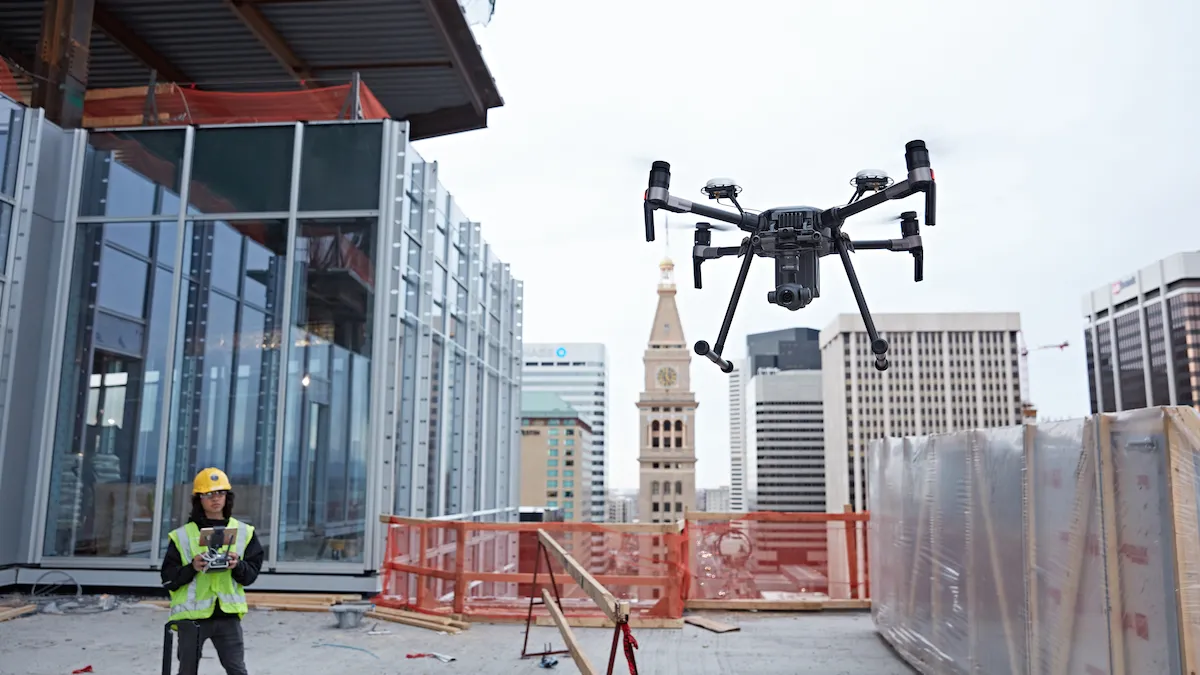Construction technology is advancing every day, presenting contractors with more tools to meet their long-term growth and efficiency goals. Even if the labor shortage isn’t letting up, AI analytics, drone hardware-software combinations, independently operated robots and other technologies are allowing the industry to do more with less.
As the year comes to a close, we're taking a look back at the impressive technological strides that have been made, spanning augmented reality, tech-infused prefabrication, hardhat sensors and more. If the industry continues this momentum, it just may shake its “low-tech” reputation once and for all.
-
VR boosts training, AR lets workers “see” through walls
As consumer interest in virtual reality headsets like the Oculus Rift and mixed reality tools like the Microsoft HoloLens has expanded in recent years, so have the pilots and use cases by AEC professionals. Entry-level headsets are being used to walk owners through a simulation of their project from an office, and architects and engineers are interacting with holograms of their designs.
AR goggles and smart helmets offered by Daqri, for example, give workers an accurate gauge of spatial relationships and let them see through walls to detect MEP clashes, without obstructing their view as they walk through jobsites.
Plus, virtual reality is increasingly being used by the Associated General Contractors of America, CM Labs, Serious Labs and others to provide realistic training on equipment operation in a low-stakes environment where operators cannot possibly be hurt.
-
Humanoid bot installs drywall independently
Researchers at Japan’s Advanced Industrial Science and Technology Institute this year announced the development of HRP-5P, a humanoid robot prototype with versatile construction skills.
Using environment detection, object recognition and other spatial awareness capabilities, the bot can pick up drywall boards, put them in place and fasten them with a screwdriver without any help from human workers. While it’s not particularly speedy, HRP-5P has far more range of motion and fields of view than a human. The researchers are working with other private companies to target labor shortages by using HRP-5P as a platform to develop other use cases.
-
AI tools run millions of options in minutes
Once considered a far-fetched or futuristic tool, artificial intelligence has been made accessible to construction companies this year by a host of burgeoning startups. Alice Technologies’ AI assistant can take on the tedious number-crunching involved in project scheduling to find within minutes the most efficient plans out of millions of scenarios. UpCodes launched an AI plug-in for design programs that runs a “spell check” on a BIM model’s code compliance, allowing architects to recognize and mitigate violations early.
OpenSpace AI stitches 360-degree jobsite imagery into a Google Street View-style map of project progress. Attracting $3.7 million in recent seed financing, indus.ai creates a “digital twin” of jobsite activity to give stakeholders better visibility into performance. And the list goes on.
-
Connected hardhats monitor workers’ safety
Several startups gained traction this year for incorporating sensor technology as another level of protection in construction hardhats, to monitor physical symptoms in workers as well as alert other workers when an accident has taken place.
Japanese company Shimabun released an internet of things-enabled kit that can be added onto standard hardhats to monitor light-headedness, overheating and falls. While aimed at preventing safety incidents, the kit can send automatic alerts when a worker is at risk. Dubai-based WakeCap Technologies uses mesh networks with its integrated helmet sensors to automatically collect data on workers’ locations, in order to make sure machine operators have the right permissions and that workers steer clear of unauthorized or dangerous work areas.
-
Hyperloop is happening
Five years after Tesla and SpaceX unveiled “Hyperloop Alpha,” an open-source design for sealed tubes that can transport pods at high speeds without friction, private companies have raced to complete a commercial system.
In 2013, Elon Musk pitched Los Angeles to San Francisco as the first hyperloop route, but so far Musk's SpaceX boasts only its headquarters-based test track. SpaceX and Virgin Hyperloop One each launched feasibility studies as part of agreements with U.S. state as well as foreign governments, but Hyperloop Transportation Technologies will likely beat them and other companies to the punch.
In July, HTT signed a deal with an Abu Dhabi-based developer Aldar Properties PJSC for a 10-kilometer route that may eventually connect to other hyperloops in the region. Construction is scheduled to begin in 2019 with the first portion of the loop operational in 2020.
-
“Constructuring” marries manufacturing efficiency to building process
According to McKinsey & Co., the world would be $1.6 trillion better off each year if construction’s productivity growth over the past two decades had matched that of manufacturing. Several companies looking to manufacturing for inspiration have powered forward in 2018, including Katerra, which earned Construction Dive’s Dealmaker of the Year title, and Prescient, our Innovator of the Year.
Taking after lean manufacturing leader Toyota, both firms fully integrate their designs through the prefabrication and installation process, targeting “just-in-time” delivery, reducing waste and completing projects faster and cheaper than traditional methods allow.
Vertically integrated Katerra reached a valuation of more than $3 billion this year with $3.7 billion in backlog and Prescient is steadily expanding the scope of its projects, achieving 18 stories in height and nearing 10 million total square feet. Both look to shake up the industry for years to come.
-
Drone hardware and analytics software take off
No longer just tools for collecting aerial images, drones are now being used with a variety of software programs to carry out functions as complex as determining the volume of dirt in a pile and identifying heat loss from a structure. And as Federal Aviation Administration regulations for unmanned aerial systems continue to ease up, the use of drone data in the industry is sure to scale up.
Hensel Phelps, for example, uses drones equipped with LiDAR sensors to improve surveying efficiency and accuracy, as well as infrared thermal sensors to find areas where HVAC could be more efficient. The contractor also converts data collected by drones into point clouds which it incorporates winto BIM and photogrammetry programs.
Over the year, a number of drone solution providers, including Propeller Aero, 3DR and DJI, have expanded their partnerships as well as abilities to convert drone data into useful analytics for project decision-makers.














